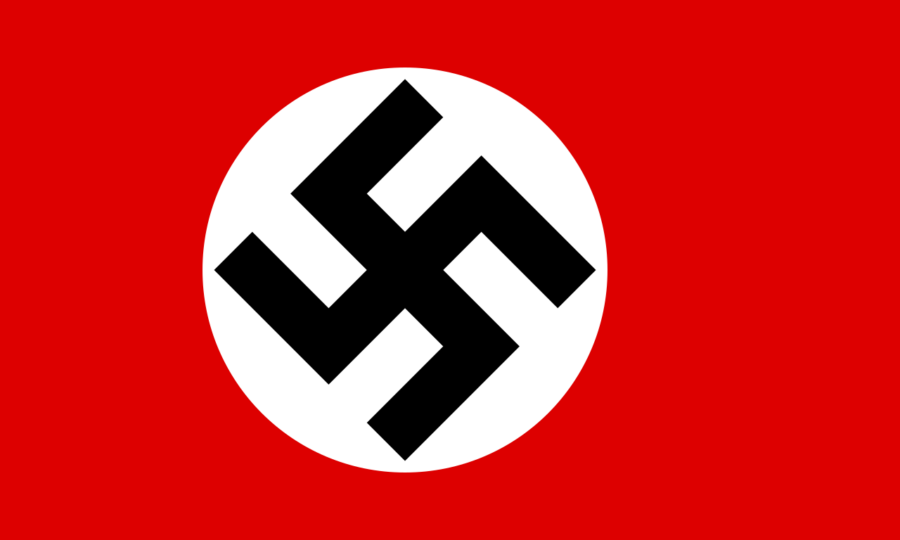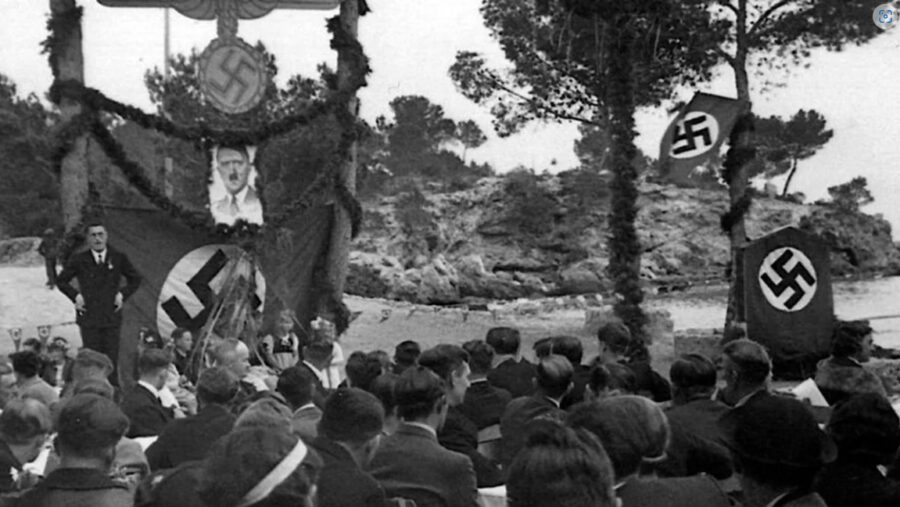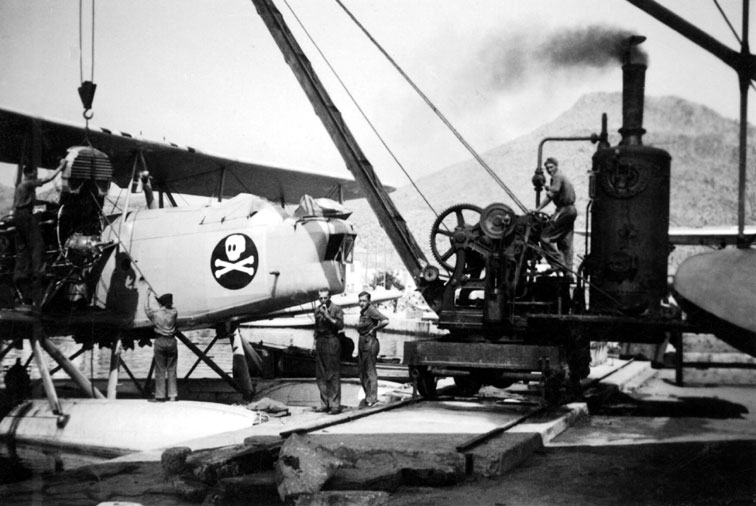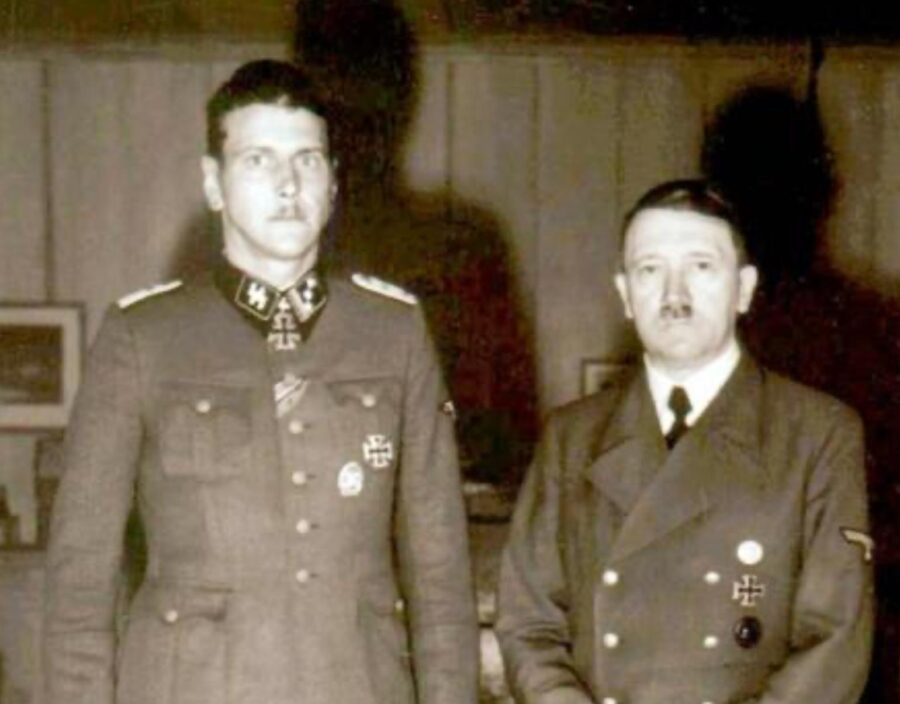
Nazis in Mallorca
It is said that nowadays Mallorca is a very cosmopolitan island, as there are people of every imaginable origin. And among them, of course, many come from Europe, be they Romanians, Italians, British, Swedes or Germans. Perhaps the latter are the most abundant, whether they are simply tourists or citizens who have settled here. We probably think that the first Germans started coming here in the 1960s, with the tourist boom, but in reality they were coming much earlier, albeit in small numbers. They came for different reasons, and those who, for historical reasons, today attract a lot of attention are a very specific group. Today we will talk about the Nazis in Mallorca.
The Nazi movement
After the First World War (1914-18) and Germany being defeated, the Treaty of Versailles established harsh conditions for the losers. The 1920s saw a severe economic and social crisis in Germany and the emergence of many citizen movements and protests. The ideal breeding ground for an ideology, National Socialism, which promised stability, progress and values to unite society.
In 1923 Adolf Hitler had already attempted a coup d’état, which failed and led to his imprisonment, where he wrote his book “Mein Kampf”. Once he was out, his attempts to seize power continued, albeit now through democratic channels, the corresponding elections. The crash of 1929, the worsening economic situation and Hitler’s excellent oratory helped the Nazi party to rise in the country.
In January 1933 Hitler succeeded in becoming chancellor of Germany, and in the elections in March of the same year he won 44% of the vote. Not the majority, but enough to eliminate the opposition and to accumulate power by means of bad arts. When the president of the republic, Hindenburg, died in August 1934, Hitler took over the reins of the country. There began what was to last 1000 years, the German Third Reich.

First Germans and Nazis in Mallorca
In the 1930s there were already some 3,000 registered German citizens in Palma, and on the island as a whole there were an estimated 9,000. They were of all ideological and political persuasions and many had come simply to set up businesses, such as the well-known “Relojería alemana” (German watchmaker’s shop) founded in Palma by Wilhelm Krug in 1879.
In June 1932, before Hitler came to power, the “Association of German Residents” was already set up in Palma, in a house in the El Terreno area. It was a way of fraternising with fellow countrymen, organising field trips, excursions and cultural events, where Nazi symbolism and pictures of their leader, Adolf Hitler, were commonplace. In reality, it was a delegation of the NSDAP (German National Socialist Workers’ Party), one more of its tentacles to extend its power.
The German consulate was located in the middle of Palma’s Plaza Cort, where consul Hans Dede established himself as early as 1932. In addition to the typical consular activities, German citizens in Mallorca and opponents of Nazism were monitored and marked from there, most likely with the help of the Gestapo. An example of this is Anton E. Zischka, who, under the guise of being a simple journalist living in Cala Sant Vicenç, acted as a Gestapo agent and even coordinated the supply of German submarines operating in the Mediterranean during the Second World War.
The German Nazis, well known for their good organisation, gradually expanded their networks and control, relying on local Falangists. Several intellectuals and opposition figures living on the island were arrested and imprisoned. The Nazi machinery of repression never rested.

Condor Legion in Mallorca
In July 1936 civil war broke out in Spain and the rebels against the Republic quickly turned to Mussolini’s Italy and Hitler’s Germany for help. The latter reacted quickly and sent a group of volunteers, the “Condor Legion”, mainly airmen, to establish themselves at various bases in Spain. One of them was the port of Pollensa, where some 110 soldiers and 16 Heinkel 59 and Heinkel 60 aircraft were deployed. These biplane aircraft were seaplanes with which aerial bombing raids were carried out against Barcelona, Tarragona, Valencia and other strategic points on the Levante coast.

Seaplane of the Condor Legion in Pollença – extracted from Walter Weiss’ book “Legión Cóndor – reports, photos, documents, facts”.
Expansionist Nazism
Nazi ideology proclaimed the superiority of the Aryan race over all others, and especially the elimination of other groups considered inferior (Jews, Gypsies, etc.). It also advocated the need for more space for Germany, the “living space”, and for this reason they annexed territories that they considered should be part of the Third Reich. For example, Austria, or Bohemia-Moravia in the Czechoslovakia of the time. However, this was not enough, and in 1939 Nazi Germany, under false pretexts, invaded Poland, thus starting World War II.
The German army was very powerful, disciplined, effective and equipped with modern weapons and revolutionary tactics (“Blitzkrieg”), which enabled it to conquer much of Europe and North Africa in a short period of time. Even so, the Allies had extraordinary powers in the East (the USSR) and in the West (mainly the USA and the UK) that were able to hold Nazi Germany in check and finally defeat it in 1945.
Defeat and general disbandment
With Nazism defeated, the victorious powers strove to capture as many Nazi leaders as possible for trial. Although some of the most prominent committed suicide earlier (Hitler himself, but also Goebbels and Himmler), they managed to bring many others before an international military tribunal in Nuremberg. Among them Göring, Dönitz, Hess, von Ribbentrop, Speer … up to a total of more than 600 people accused of war crimes and crimes against humanity.
But apart from the most visible heads, there were hundreds, if not thousands, of less famous Nazi leaders, commanders and collaborators who, knowing that sooner or later they would be identified, decided to escape from Germany and start a new life somewhere else.
The preferred refuge was South America, Brazil, Paraguay and especially General Perón’s Argentina, which took in a multitude of escaped Nazis. Some others preferred to stay in Europe, and Franco’s Spain was a fairly quiet and safe option. According to Allied reports, up to 40,000 Nazis were hypothetically welcomed here, either to stay or to make the jump to South America. And within our country, there were several who chose Mallorca.

Nazis in Mallorca
It is not known exactly how many former Nazi leaders ended up in Spain, nor is it known exactly how many ended up in Mallorca. Most of them probably wanted to remain as inconspicuous as possible, but some were already well known, such as Ernst Chlan or the astonishing Otto Skorzeny.
Ernst Chlan
Born in 1912, he studied law in Vienna and worked in the Dachau concentration camp from 1933 to 1934. After completing his studies, he took part in the deportations of Jews. After the war, he fled to South America under a false identity and reportedly returned to Europe in 1955 to work in tourism for the Scharnow-Reisen company. In the 1960s, he was stationed in Mallorca, a period in which his subordinates and colleagues spoke highly of him. The company later became the now famous Tui, where Chlan continued to work until 1971, when he was replaced. He then returned to Innsbruck and died in 1992 at the age of 80.
Otto Skorzeny
Born in 1908 in Vienna, the life of this giant of almost 2 metres in height was impressive, full of adventures and adventures. Five books would not be enough to detail them, but here we will give you a glimpse. He studied engineering in Vienna and while studying he took up fencing, being wounded in one of the duels in which he took part. The mark on his cheek stayed with him for the rest of his life and earned him the nickname “cut face”. In 1931 he joined the Nazi movement in Austria.
When World War II broke out, he volunteered to become a pilot in the Luftwaffe, but was rejected because he was too tall to fit into a cockpit. He was posted to the army, serving on the fronts in France, the Netherlands, the Balkans and Russia, where he was a fearless and astute SS fighter. He was wounded and then sent to military intelligence, moving on to special troops in charge of sabotage, guerrilla warfare and the like.
Otto Skorzeny – special operations
At that time, Hitler gave him the mission that would make him famous: the rescue of Mussolini, whose whereabouts were unknown. A spectacular operation was organised with gliders and parachute commandos, as the Italian dictator was confined to a hotel on the Gran Sasso mountain in the Apennines. The result was a resounding success, earning Skorzeny a promotion and decoration.
Hitler later commissioned him to carry out other very special operations, such as trapping Tito in Yugoslavia and Operation Greif…. but even so, the end of the war was near and Germany’s defeat was inevitable. Skorzeny sensed this and gave himself up to the Americans, who imprisoned him for more than two years.
When he was free, he went to live in Madrid, where he worked as an engineer and representative of German companies, doing very good business, under the protection of the Franco regime. Being a man accustomed to action, he still found time to work for the Egyptian leader Nasser, also for the Israeli Mossad and as a bodyguard for Eva Perón …..
In short, a hectic life that he was able to combine with long stays in Mallorca, in a house in Alcudia. He died in Madrid in 1975, aged 67.
Recent neo-Nazi movements
It seemed that the whole Nazi universe had disappeared, but from time to time new outbreaks emerge in Germany. Recently, in 2019, Michael L. Stiegler, one of the self-styled Reichsbürger (Reich Citizens), was arrested for attempting a bomb attack in a village in Bavaria. The police were on his trail and to avoid capture he fled Germany and took refuge in a luxury villa in Paguera. This type of ideology is not extinct and with Mallorca being so closely linked to Germany, it is relatively easy to have such individuals on the island.
Do you want to know more about all this exciting history?
We recommend the book by Alexander Sepasgosarian, “Mallorca under the swastika, 1933 – 1945” or the documentary about Otto Skorzeny “The most dangerous man in Europe”
Maybe you are interested in the topic of seaplanes, and you would like to read something about seaplanes in Mallorca, if so, follow the link: Seaplanes in Mallorca – Productes de Mallorca
